CCII 00007 black vs white glaze & CX vs EU Competitor
This evaluation provides evidence for the superior performance of the black emitter surface over the white surface. In fact the results find the black element outperforming the white by 8%. A second set of tests shows for a range of black and white hollow emitters that performance of Ceramicx' and EU Competitor's modules are almost identical in performance.
| 19.09.2019 | 2.82 MB |
download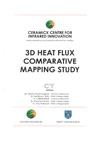
|
CCII 00014 Aluminised and Stainless Steel Discolouration
This test report shows the superiority of the Ceramicx reflector material compared to alternatively used reflector materials regarding its resistivity against high temperature discolouration and degeneration, both leading to an inevitable loss of reflection properties. Also in a direct comparison to a well-known European competitor it shows that Ceramicx' material is at least equivalent if not even better.
| 25.06.2014 | 1.55 MB |
download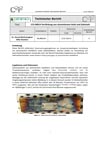
|
CCII 00024 Report for Friedr Freek QFE Arrays
This test report analyzes the heat flux homogenity respectively profile of emitter arrays in IR modules or panels, specially looking at the effect of reflectors and contribution of single emitters. An array comprising 9 QFE 150W elements arranged in a 3 x 3 pattern was tested with and without surrounding reflectors. In addition various single elements were powered off to study the heat flux profiles. Using the longest reflector minimises dispersion of the emitted radiation and also results in a more confined heat flux spread with higher peak values.
| 25.06.2014 | 0.80 MB |
download
|
CCII 00034 Performance of Hollow vs Plain elements, with and without reflector
This report measures the differences in emitted heat flux between hollow and plain elements. Of particular interest is the effect of a reflector placed at the rear of the elements on the emitted infrared output. If a hollow element is used without a reflector, it will not suffer a drop in performance to the same extent as using an FTE element without a reflector. The FFEH 600W gives almost the same infrared output as an FTE 650W element, and also a higher peak heat flux thanks to its narrower elliptical heat flux profile.
| 09.05.2017 | 1.32 MB |
download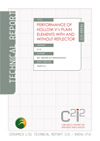
|
CCII 00101 Infrared heating of multiwalled composites and polymers
The results presented in this paper are indicative of the surface heating and penetrative capability of infrared. This data shows that simple material variations such as surface finish can cause dramatic changes in the IR the heating rate as well as how the penetrative properties of infrared radiation, when matched to the material being heated can often be utilised to heat a second surface below the first layer. The results also show the importance of actual tests on specific materials which must be taken in conjunction with the material processing steps.
| 20.10.2017 | 1.48 MB |
download
|
CCII 00107 Comparison study of five quartz glasses used for heating element protection
The results of the experiment above show that the Robax® glass, currently used by Ceramicx, to protect its heaters possesses one of the best IR transmission properties for the quartz cassette heaters. This is because the transmission spectrum for this glass is at a maximum in the active waveband of the heater.
| 20.10.2017 | 2.62 MB |
download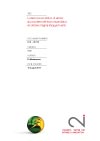
|
CCII 00116 Analysis of the performance change by inclusion of Basalt fibres in Ceramic Elements
This analysis shows that adaptation of Ceramicx's ceramic mixture to include igneous rock fibres does not alter the efficiency of the elements. Of more influence is the colour of the glaze, which can lead to a 4% increase in the radiant heat flux output for a 1000W heater. Consistent with previous research carried out and published by Ceramicx, the black glaze remains the most efficient heat flux increase method.
| 20.10.2017 | 0.99 MB |
download
|
CCII 00117 Aluminised steel comparison
The exact reasons for the material degradation differences are unknown; however, this analysis shows that at elevated temperatures, the durability of the aluminised steel material used by Ceramicx is superior to that used by a leading competitor. The influence of the surface polishing of the Ceramicx material cannot be discounted, however quite how this influences the thermal durability is unknown.
| 20.10.2017 | 1.25 MB |
download
|
CCII 00120 - Comparison of aged reflector efficiency
As previously shown by Ceramicx, the use of a polished aluminised steel reflector increases the percentage radiative heat flux emitted towards the heating target compared with stainless steel. For lower temperature applications, where oxidation of the aluminium is unlikely to occur, aluminised steel is shown to be a better performing material. For higher temperature applications, where aluminium oxidation is likely to occur, stainless steel is a better choice as it leads to a greater proportion of radiative energy directed towards the target material.
| 14.06.2018 | 1.50 MB |
download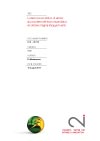
|
CCII 00129 - Post-cure carbon fibre heating with various elements
A company is interested in heating the surface of a post-cure composite piece. The piece needs to be heated to approximately 230°C within 15 seconds. This paper demonstrates the procedure to find the best suiting emitter type and IR heating set-up to match the heating task.
| 19.09.2019 | 1.05 MB |
download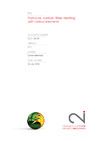
|
CCII 00146 - Performance evaluation of 800W FTE, FFEH, and Black FFEH
In this experimental study the performance of three standard Ceramicx elements, an 800W FTE, an 800W FFEH, and an 800W FFEH with black glaze was evaluated within Ceramicx’ Herschel heat flux robot. From the results it is calculated that the FFEH outperforms the FTE by 9.2%, and the black glaze outperforms the white glaze by 3.9%.
| 19.09.2019 | 0.92 MB |
download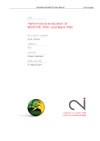
|
CCII 00152 - IRP4 performance evaluation
Two tests were implemented for the purpose of this report:
Test 1 compares the performance of 2 standard FFEH 800W (running at 400W each) when paired with various reflectors, and in turn when fitted with various grills as seen in an IRP4.
Test 2 quantifies the ability of an IRP4 to heat a concrete slab from a set distance. It also monitors the internal and surface temperatures of the IRP4. In fact, the aluminised steel reflector outperforms the stainless steel by approximately 6% and using a grill means a performance reduction by min. 20%.
| 19.09.2019 | 1.48 MB |
download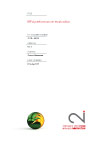
|
3D Infra-Red Heat Flux Mapping
This technical article explains the most intriguing "toy" of the Ceramicx Centre of Infrared Innovation C²I², the Herschel measuring robot. With Herschel it becomes possible to scan 3D images of a the heat flux that is radiated from any IR source. Herschel indeed is an instrument that makes IR-radiation visible. This will help to lift IR applications engineering onto the next performance level.
| 25.06.2014 | 1.54 MB |
download
|
Heatworks 11 - Putting the cap on it
(In: HeatWorks 11, February 2014, pages 14 - 15; Publisher: Ceramicx Ireland Ltd.)
This article explains the motivation, the procedure and the detailed realization of a significant further improvement of the Ceramicx' quartz cassette heater range. After reading the article you will understand why Ceramicx customers can only benefit from this innovation.
| 25.06.2014 | 0.33 MB |
download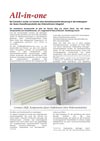
|
Heatworks 11 - The proof of the pudding - The new Ceramicx Centre for Infrared Innovation
(Dr Gerard McGranaghan. In: HeatWorks 11, February 2014, pages 12 - 14; Publisher: Ceramicx Ireland Ltd.
In this article you are introduced to the Ceramicx Center for Infrared Innovation C²I². This supports Ceramicx to unveil the truth about infrared heating and its industrial heat works applications. To achieve this goal a group of scientists takes advantage of the Herschel measuring robot that allows for mapping 3D heat flux images of any kind of IR radiating sources. Additionally the Center also imparts knowledge of IR-radiators and their applications via its online courses on www.ceramicxinfraredtraining.com.
| 25.06.2014 | 0.89 MB |
download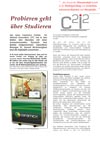
|
IR v Convection Report V2
This paper proves by the sample of an aerospace grade carbon fibre laminate of approximately 4, 5 mm thickness that IR out-of-autoclave (OOA) curing has an ability to greatly enhance composite properties compared to the results achieved in a conventional convection oven. It has been shown that cure using a convection oven is not a fit and forget method with programmed heating rates not being representative of the heating rate that the part experiences. IR’s ability to respond rapidly to temperature variation ensures a greatly enhanced ability to match part temperature to intended temperature.
| 19.09.2019 | 3.03 MB |
download
|